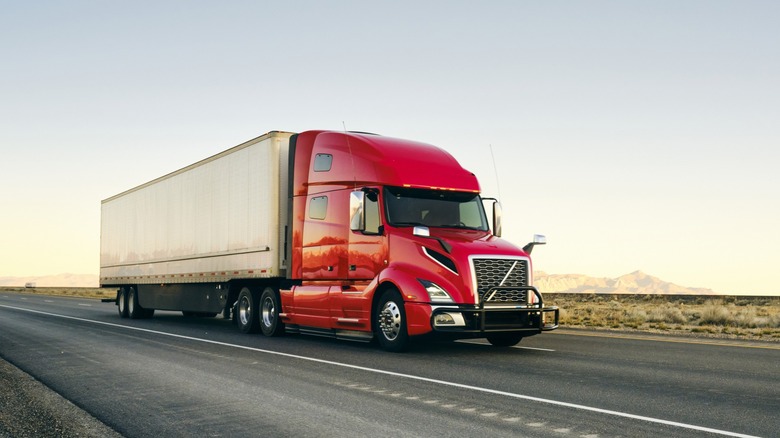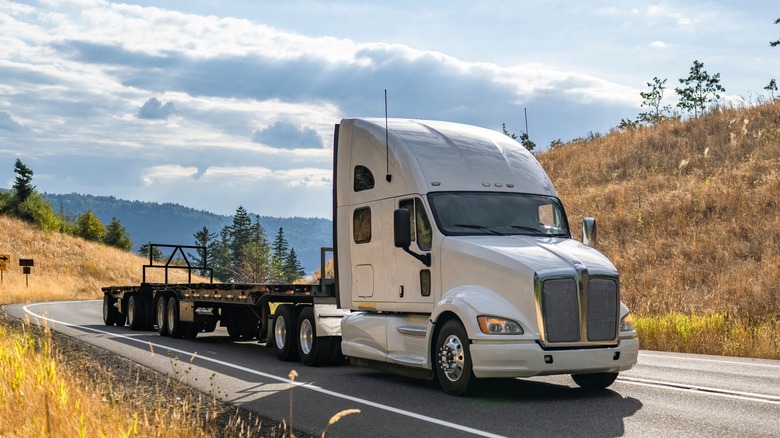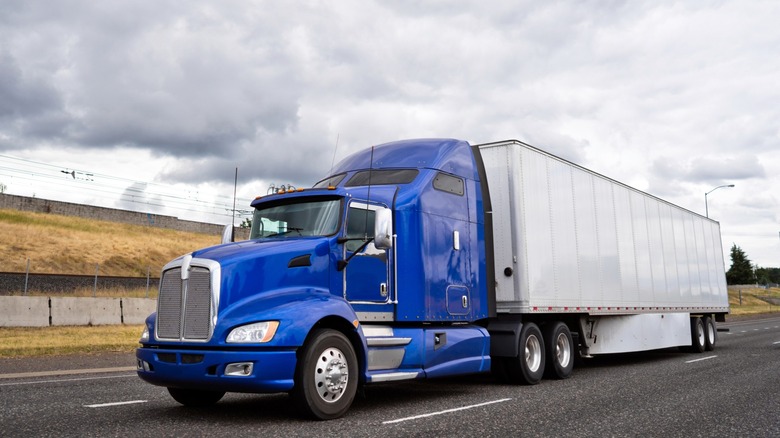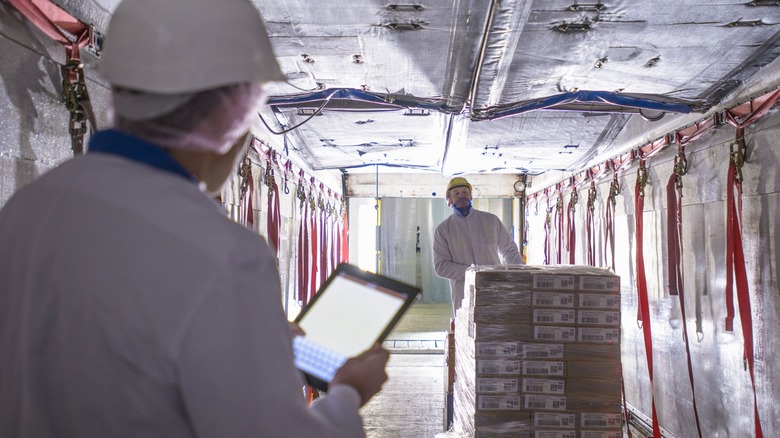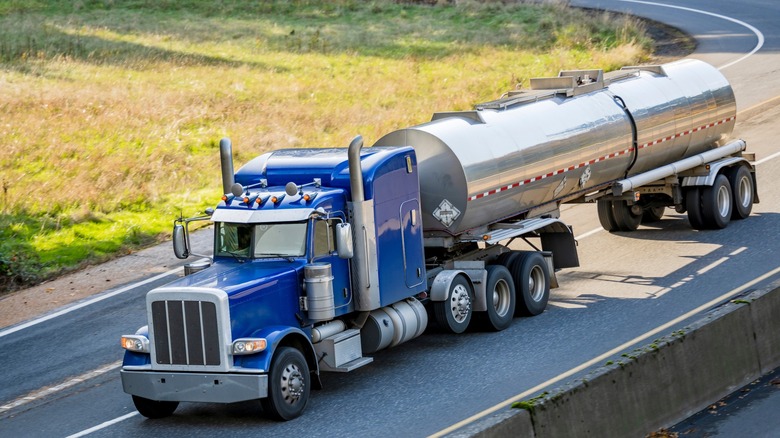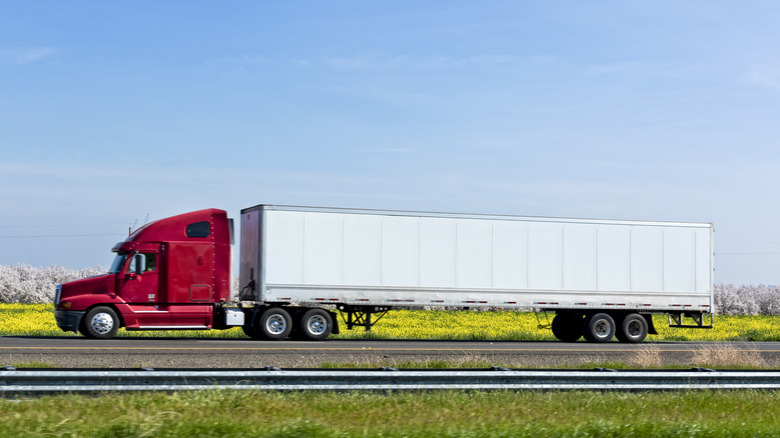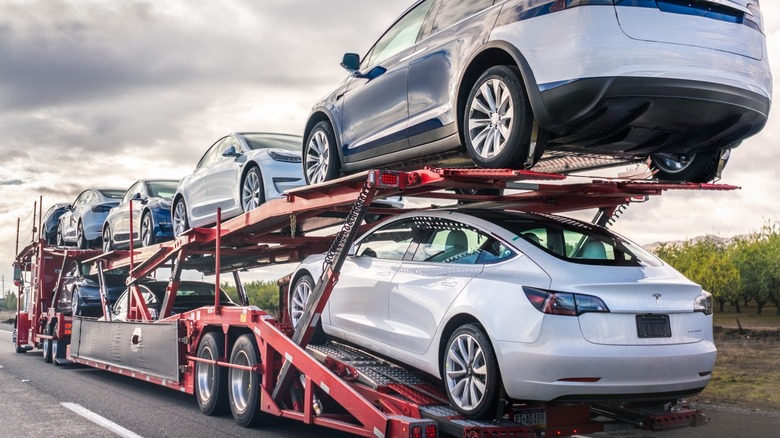What Are The Different Types Of Semi-Trailers & How Do They Connect To The Trucks?
Let's be honest: unless you work in the freight industry, it's easy to think of a semi-trailer as just a big cargo box on wheels. In reality, there's a whole variety of semi-trailers out there, each designed with a specific purpose in mind. In fact, if you pay attention, you'll notice that not all these trailers look the same. Some are flat and open, others are enclosed, and some have peculiar shapes that make you wonder what they're carrying.
It's one thing to move items from one point to another. It's another thing entirely to transport them safely, efficiently, and under the right conditions. Whether you're hauling construction equipment that needs special handling, keeping perishable food at the perfect temperature, or transporting bulk materials like grain, there's a trailer built specifically for that job.
So, what exactly is a semi-trailer? It's a type of trailer designed to be hauled by a semi-truck. Unlike a full trailer, a semi-trailer doesn't have a front axle. That means it relies on the truck for both support and movement. In this article, we'll break down the different types of semi-trailers you might spot on the highway and how these enormous trailers connect to the trucks that pull them.
Flatbed trailers
These trailers have a completely flat, open deck without any sidewalls or roofs and due to their open design, flatbeds are quite versatile. They can carry all sorts of large, bulky, or oddly shaped items. Since the deck is completely open, you can load cargo from any direction: the top, sides, or rear.
However, since flatbed trailers don't have walls or a roof, the cargo is fully exposed to the elements. This means that when securing and protecting the load, you have to be cautious. If something shifts or gets damaged because it wasn't properly secured, that becomes a major safety risk not just for the cargo but also for other road users. If you're considering a flatbed trailer, think about the specific nature of your cargo, the distance you'll be traveling, and how much exposure to the elements your goods can handle.
While all flatbed trailers have a generally open deck, there are a few variations in design to handle different types of loads. For example, if you're dealing with extra-long cargo, there's the extendable trailer. This type of flatbed trailer has a sliding mechanism that lets the deck extend or contract. So, for context, standard flatbed trailers are typically between 48 and 53 feet long, but an extendable flatbed can stretch up to 80 feet. If your cargo is really tall, then you might want to consider a lowboy trailer, which has a deck that sits just 12 to 18 inches above the ground. That way, you can move your oversized cargo without worrying about height restrictions on the road.
Dry van trailers
The most common type of semi-trailer you'll see on the highway is a dry van trailer. The fully enclosed design means it's perfect for hauling almost any kind of freight that doesn't require special handling or temperature control. Plus, the fact that it comes with doors you can secure with locks means there's some level of assurance that your cargo can travel safely.
One of the reasons dry van trailers are so common is because of how versatile they are. They're popular across many industries, shipping everything from electronics from major TV brands to clothing to packaged goods. Its sealed interior means the cargo is safe from the elements, whether it's sun, rain, or dust. The design also allows you to efficiently stack boxes, crates, and pallets, making it easy to combine multiple shipments into a single load. In fact, a standard 53-foot dry van can handle up to 45,000 pounds or roughly 26 standard pallets. Now, you see why it's so popular for bulk shipping.
When loading a dry van, however, it's important there's a balanced distribution of weight throughout the trailer. According to U.S. Department of Transportation regulations, trucks with two axles can legally support up to 34,000 pounds per axle group. Ultimately, how much weight you can safely load per axle depends on your truck's tire load rating, suspension capacity, and federal law.
Refrigerated trailers
When transporting temperature-sensitive goods like food, pharmaceuticals, and chemicals, you need a refrigerated trailer — also known as a reefer trailer. This type of trailer is designed with a built-in cooling system and insulated with materials like polyurethane foam to ensure a stable internal condition that keeps the goods fresh throughout the journey.
So, depending on the cargo, you can set the temperature anywhere between minus 85 degrees Fahrenheit and 70 degrees Fahrenheit. With a lot of modern reefers, you can even monitor the temperature remotely and adjust it in real time. Reefers, however, are usually more expensive than standard trailers. The refrigeration unit uses a specialized type of diesel fuel, which significantly increases operating expenses. In addition, maintenance costs are higher because the refrigeration system requires regular servicing to ensure it stays operational. A malfunction during transit can cost you an entire load of perishable goods. Because of this, drivers and fleet operators have to closely monitor the unit and deal with the slightest issue immediately.
Due to the sensitive nature of the goods they transport, reefers face stricter regulations, such as the Food Safety Modernization Act (FSMA) for food products and the Good Distribution Practice (GDP) for pharmaceuticals. Non-compliance can attract sanctions such as a fine or a license withdrawal.
Specialty trailers
As we said before, every type of cargo has a trailer specifically designed to transport it. Across industries, different types of cargo often come with unique handling requirements, which is why specialty trailers exist to meet these demands. For instance, if you need to transport cars from a port to a dealership, you'd use a car carrier trailer. The most common type is the open carrier, which typically has two levels and can transport up to 10 cars at once, depending on the size of the vehicles. When it comes to moving loose, heavy materials like sand, gravel, or scrap metal, dump trailers are the go-to choice. These trailers are equipped with hydraulic lifts that tilt the trailer bed, making it much faster and easier to unload bulk materials compared to doing it by hand.
You've likely seen tank trailers on the highway: they're the cylindrical trailers popularly used to transport gas. However, tank trailers aren't just designed for transporting gas. They can carry all kinds of liquids and even dry materials like powders or granules. However, due to the sensitive nature of their cargo, these trailers are built with safety in mind. Most come with emergency shutoff valves to prevent leaks or spills, and they come in both pressurized and non-pressurized versions. Pressurized tanks are used for materials like propane or compressed natural gas, which need to remain under pressure, while non-pressurized tanks transport items like water, fuel, or food products.
There's also the side-lift trailer, also called a self-loading trailer, which is really unique. While other trailers need external equipment like cranes or forklifts to load cargo, side-lift trailers are able to load and unload containers without any special lifting equipment thanks to the hydraulic arms mounted on the sides.
How do these trailers connect to trucks?
The process of connecting a semi-trailer to a truck might seem straightforward, but getting it right is important. If the connection isn't secure, there's a real risk of the trailer detaching, which can lead to you losing expensive cargo, damaging equipment, or, worse, causing serious accidents on the road.
To start, you connect the trailer to the truck using a coupling system made up of two key parts: the fifth wheel on the truck and the kingpin on the trailer. The fifth wheel is a flat, circular plate mounted on the truck's chassis, and it locks onto the kingpin, which is a tough steel pin under the front of the trailer. This connection allows the trailer to move as a smooth extension of the truck.
Now, as for how you hook everything up. First, back the truck up until the fifth wheel touches the kingpin. Make sure the trailer height lines up properly. If it's too high or too low, you'll run into problems. Keep backing up slowly until the kingpin slides into place and locks. You should feel or hear it click in, but don't stop there. Do a tug test. Gently pull forward with the trailer brakes engaged. If the trailer doesn't move, you know you have a solid connection.
Once you're sure it's connected, hop out and check with your eyes. Look under the trailer to confirm that the jaws of the fifth wheel are fully locked around the kingpin. After that, raise the landing gear. Don't forget about the air lines and electrical connections. For most semi-trailers, these are the steps for a secure connection, although the more specialized a trailer is, the more connections it may require.
What to consider when choosing one
The first thing to consider when choosing a semi-trailer is the type of freight you're hauling. Different trailers are designed for specific types of cargo, so it's important to match the trailer to the job. Along with that, you'll need to think about the weight of your load. Every trailer has its payload capacity, and it's important that the one you choose can safely handle the weight of your load. Don't risk overloading; it's a safety risk for everyone on the road.
Next, you'll want to look at the size of the trailer. Semi-trailers come in all sorts of lengths, widths, and heights, so again, it's crucial to pick one that fits your cargo comfortably. For most hauls, a standard 53-foot trailer will do, but if you're moving something oversized, a lowboy or extendable trailer might be a better fit. Whatever you choose, make sure it complies with road regulations for both size and weight.
Another thing you need to consider is how your cargo will be loaded and unloaded. Flatbed trailers have an open deck so you can access from the sides, top, or rear. On the other hand, dry vans load only from the back, which works for certain shipments. So, think about your specific needs: how often you'll be loading and unloading and whether easier access could save you time.
Now, let's talk materials. Semi-trailers are generally designed to convey heavy-duty loads. However, aluminum trailers are lighter and more fuel-efficient. Meanwhile, steel trailers are stronger and more durable. Finally, think about the total cost, both the upfront price and long-term expenses like diesel, maintenance, and repairs. A high-quality trailer might seem too expensive, but it could save you money in the long run when you don't have to worry about unnecessary downtime and repairs.
